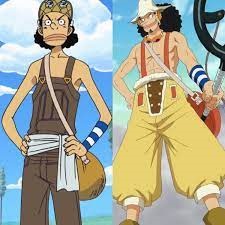There’s nothing more I love in a big story than aging characters in real time. Or, at least, close to real time.
Everyone knows long franchises often get caught in a rut with characters aging. People love the characters as-is, so they’ll stay as-is for as long as possible. Comics have their famous floating timelines, where a teenager in 1960 will still be a teenager in 2020, and a World War II veteran in 1960 will be an Afghanistan veteran in 2020. Characters may age, but it’ll be so slow that a comic strip middle schooler in the 80s will still be in university today.
But when that doesn’t happen? I’m all over it.

And I don’t mean this timeskip nonsense that shounen anime loves to do. Timeskips have their place, but they’re often a way to just sort of pass over the character growth so we can get back to the fighting and lore and whatever.
What I mean is, the characters in the story age roughly in real-time, along with the audience. Not necessarily 1:1, every month passes is a month in the story, but, you know, after one year has passed in life, you should reasonably expect one year passed for the character as well.

You already see this in movies, TV, and wrestling, because it’s real physical actors out there doing the thing. They’re forced to keep people aging as time progresses, except for Soap Opera Rapid Aging Syndrome every now and then (cw: TVTropes). But often the stories within these movies and shows don’t really make much use of all that time passing; it’s a background element or outright ignored as characters refuse to develop or progress.
That’s right. It can’t just be everyone gets older; they also have to grow more mature, too. Otherwise it misses the whole point. Sitcoms forget their plots after an episode or a season. Comics revive dead characters and revert other ones. That’s not the same.
What I love is when stories are aging characters in real time, and paying attention to that aging as well. Teens don’t stay teens forever, and people in their thirties are often very different to the forty year olds they will eventually become. I love seeing change.
Aging Characters in Real Time – Examples
Some notable stories have really made an effort of it. Some examples:
The original Gundam Universal Century franchise, while having too many timeskips, did have 150+ episodes of content between Mobile Suit Gundam in 1979 and Char’s Counterattack in 1988. The in-story timeline went from U.C. 0079 to U.C. 0093, so almost directly real-time. However, aside from Amuro Ray and Char Aznable, a lot of characters didn’t get the space to grow and change, especially those from Zeta and ZZ. And then after Char’s Counterattack, the franchise went totally nonlinear, and the direct follow-up didn’t even come out until Unicorn twenty years later!
In addition, Harry Potter is pretty much close to perfect. 1997-2007 for seven books that cover seven years. For a child who watched the first movie in 2001, fell in love with the series, and read the final book in 2007, it tracks almost perfectly. The series covers each year in great detail, except for summer vacations, no timeskips at all, so it’s probably the best major franchise example we have.
Steven Universe did a pretty good job, aging the young characters by 3 years from 2013-2019 with its original run, and then a timeskip for the sequel series that brought it to 5 years between 2013-2020.
And, fighting the fight against the floating timeline nonsense, Chris Claremont’s legendary X-Men run tried to keep the characters aging in as real time as a big shared comic universe would allow. While the monthly release schedule made it very difficult, the X-Men characters usually kept pace with their readers. It didn’t last in the long-term, but if you just read Claremont’s X-Men, you’ll see characters aging in real time, mostly.


Finally, the comic strip For Better or For Worse ran for nearly 30 years, and the characters indeed aged by 30 years. That’s really impressive.
This is What I Wanna Do
My ultimate author dream, genuinely since high school, has been to create a story just like this.
I’ve had it in my heart through multiple big projects. A giant fantasy epic, a middle school-set adventure, a comedy-romance story… All sorts of stuff bubbling up in my brain. And I always come back to this idea of aging characters in real time.
None of my books so far have done it, though. Closest one has been Hands Held in the Snow, which progressed about 6 months of in-story time in 8 months of real-life time back in 2019-2020.
The problem with this concept is that any story that does it has got to be a REALLY BIG STORY. It has to be the kind of project that will last for 5, 10, even 20 years long, and is worth that level of investment. For indie creators, that’s a way to cause major anxiety about future burnout. For big studios, that’s not a sound investment opportunity because there’s always weird stuff with contracts, underperforming brands, and corporate mergers that can mess with any long-term plan.
A really long-running comic strip can do it most easily. Gag a day with slow development, one year at a time. But comic strips are a pretty limiting medium with what stories you can tell and are not exactly at peak popularity these days.
So, if I ever made a giant-sized story like this, it’d have to be my one shot, the one opportunity to seize everything I ever wanted in one moment.
Which means I’ll keep procrastinating on it for a really long time.
But one day, you’re gonna see a project like this from me. And you’ll know you’re in it for the long haul.

